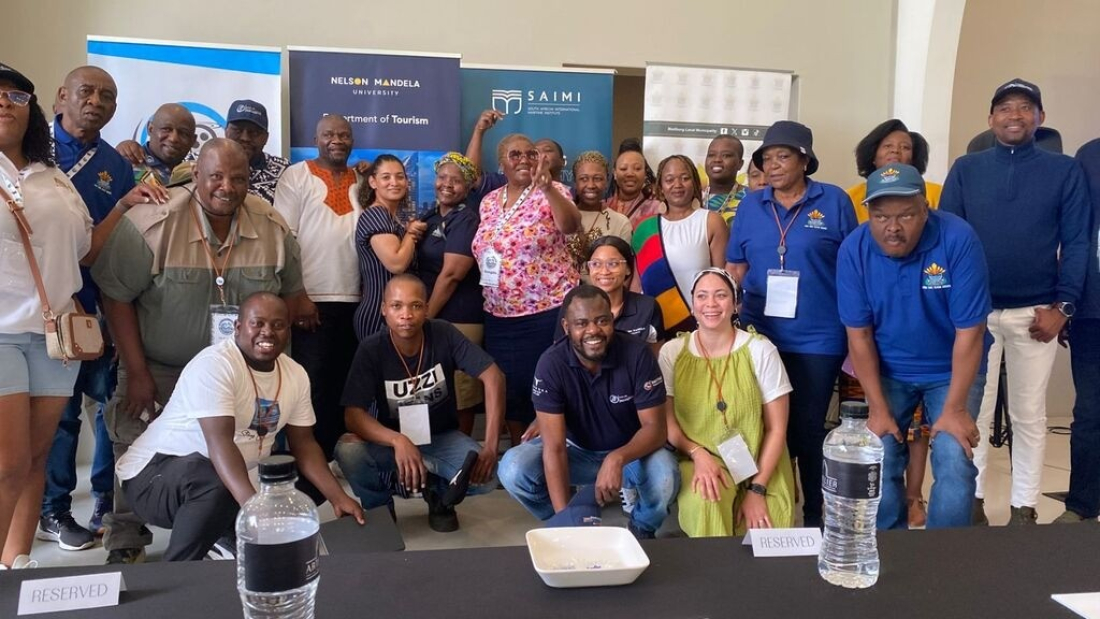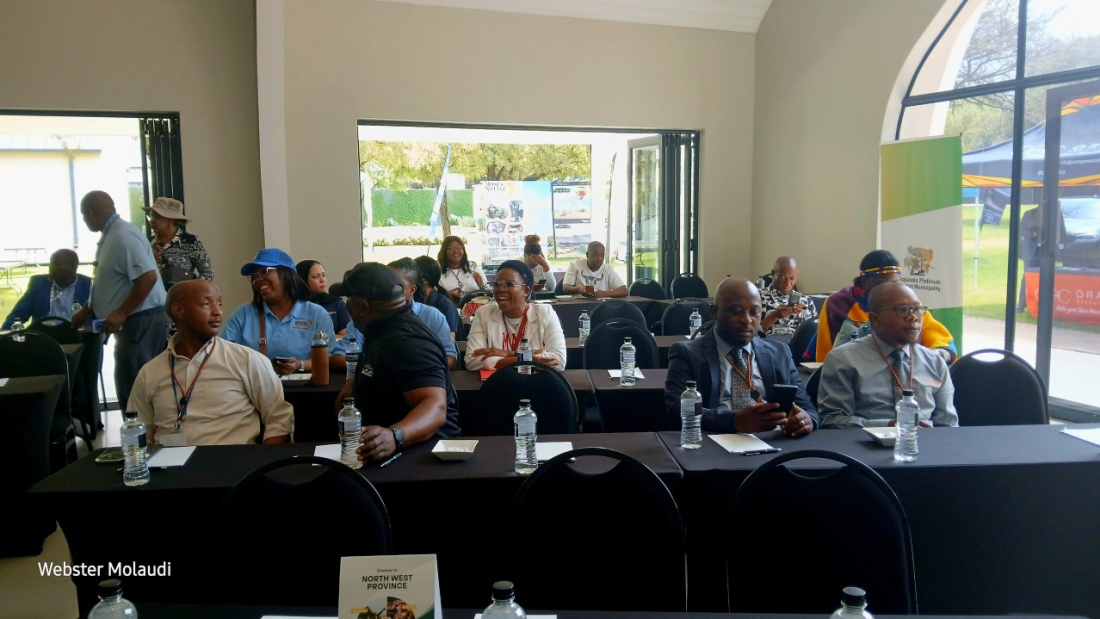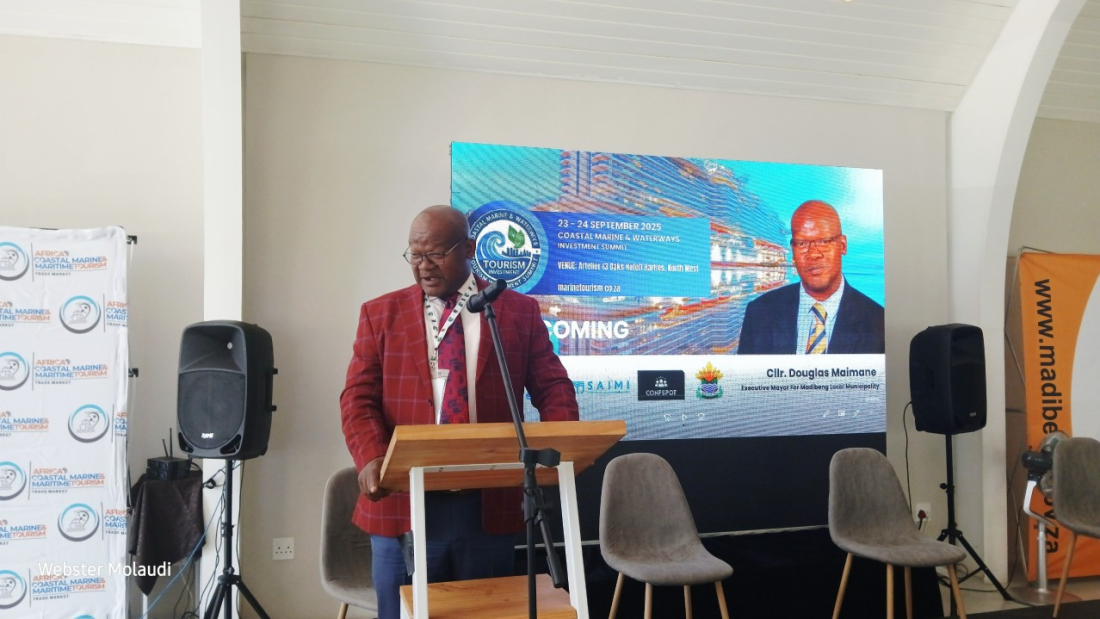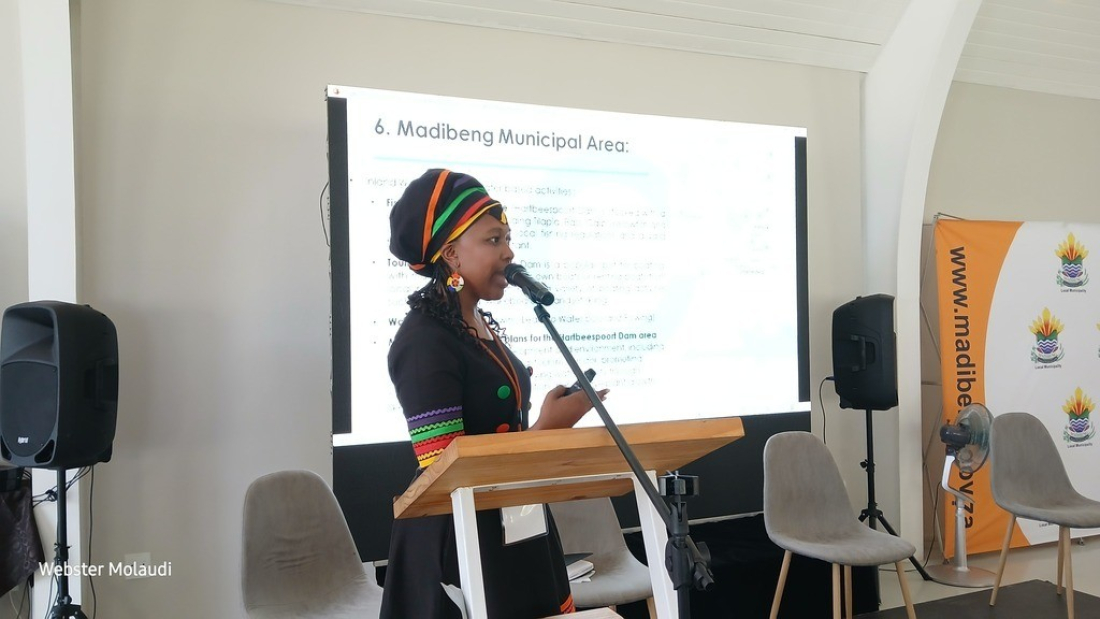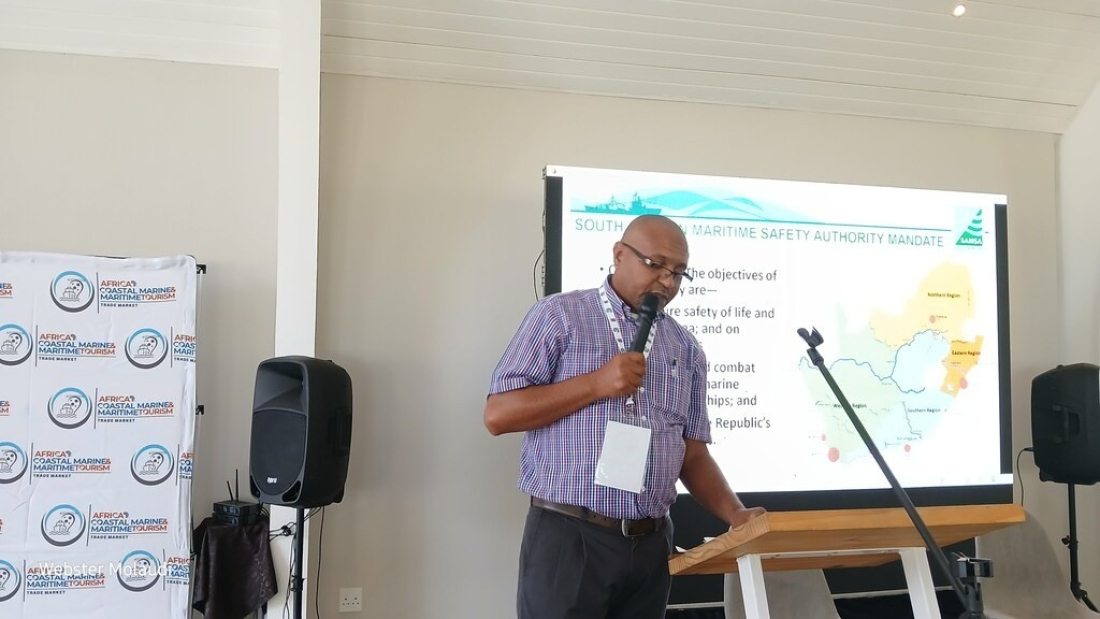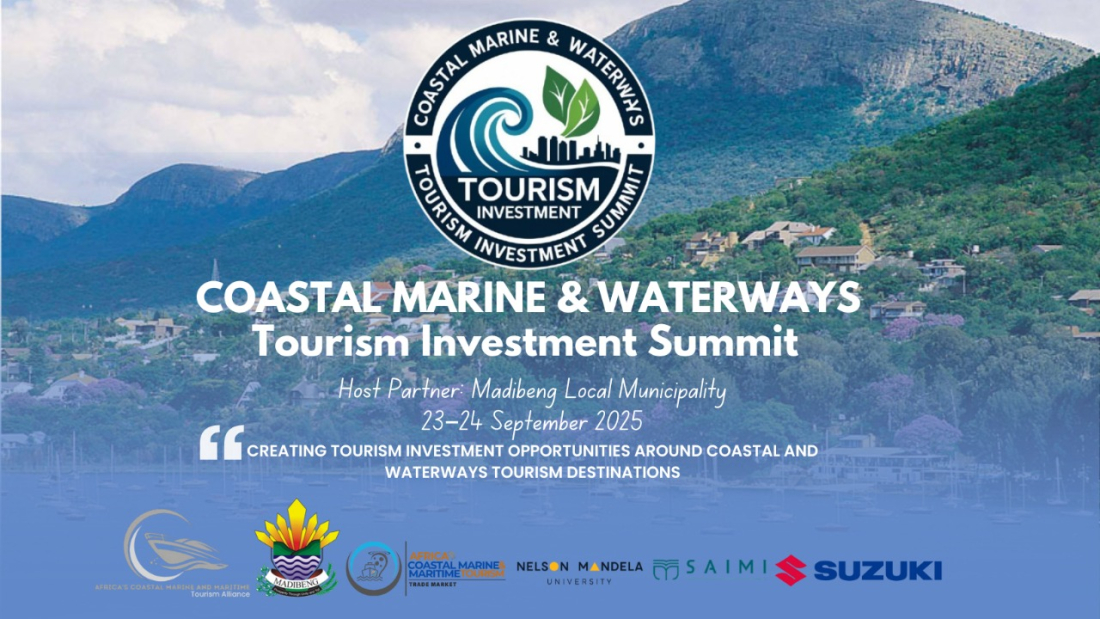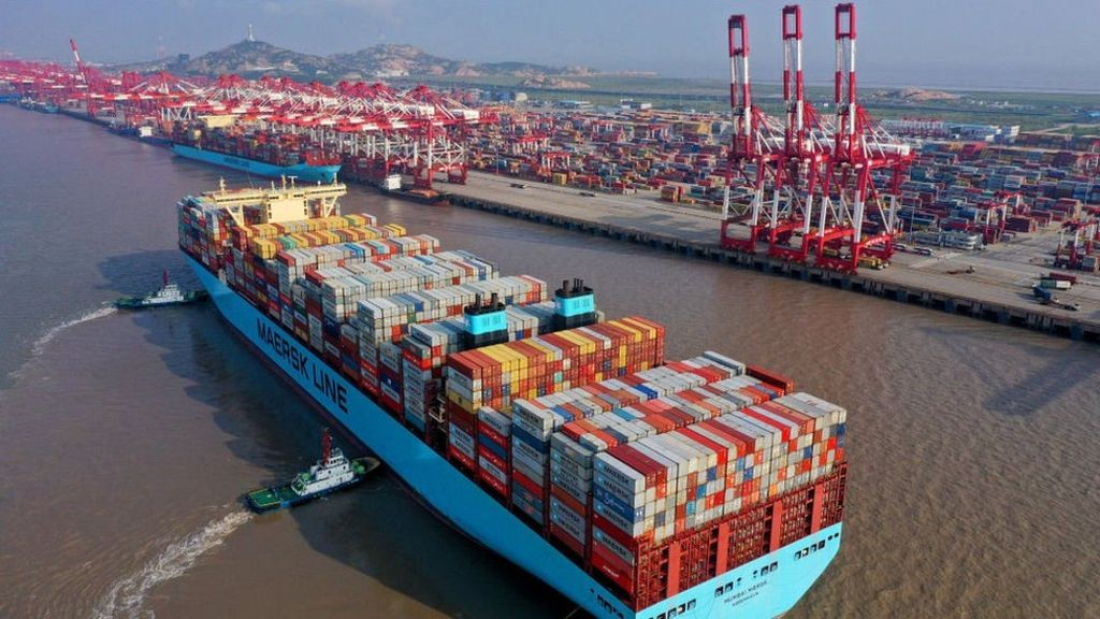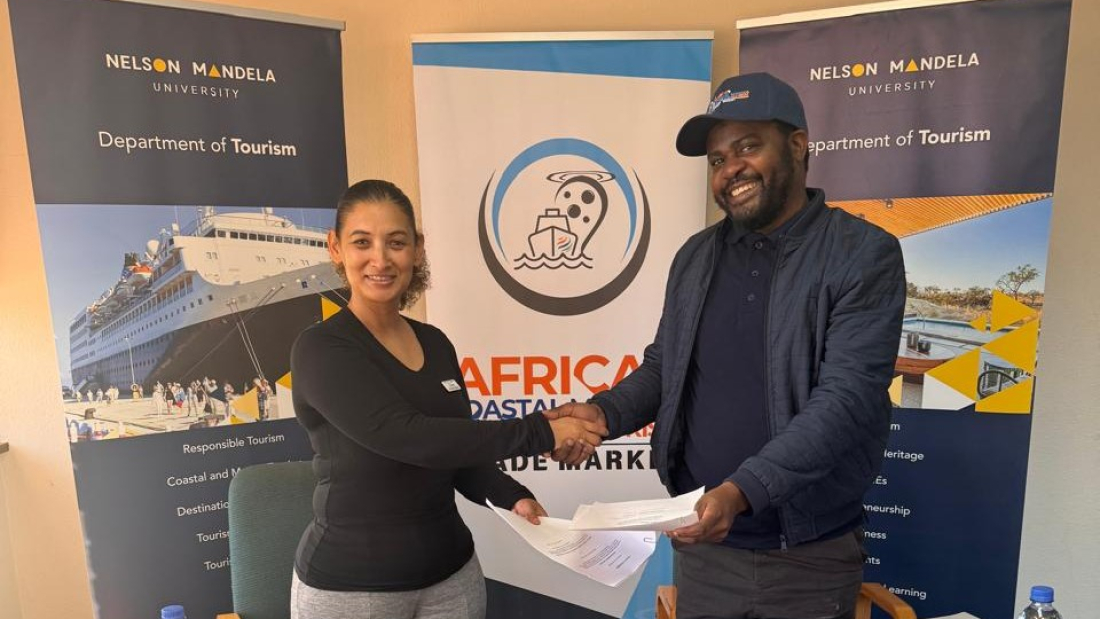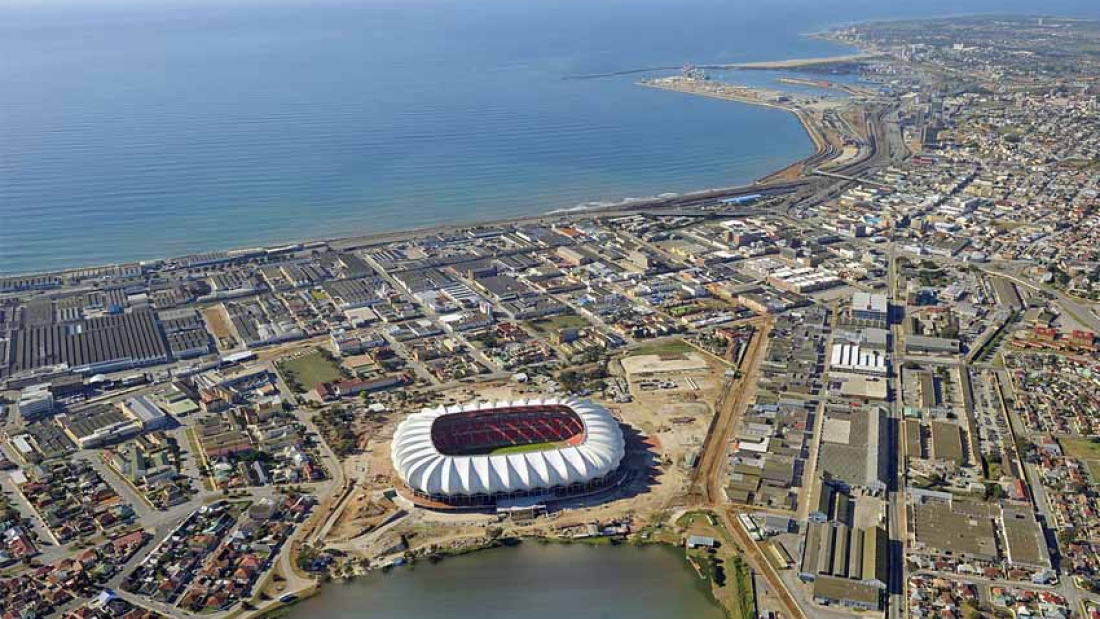The Coastal & Waterways Tourism Investment Summit 2025 in Hartbeespoort closed with calls for unity, innovation, and investment to unlock South Africa’s inland and coastal waterways as engines of sustainable tourism and economic growth.
Tourism Leaders Call for Unity and Investment in Inland Waterways
At the Coastal and Waterways Tourism Investment Summit, the Deputy Minister of Tourism, Hon. Makhotso Magdeline Sotyu, urged stakeholders to come together to unlock the full potential of South Africa’s inland waterways.
Citing the neglected Gariep Dam as an example, she highlighted the opportunity for stakeholders to collaborate in developing luxury eco-lodges and sustainable water-based tourism hubs. “With South Africa hosting the G20 for the first time, the world will be watching. When global leaders visit, from presidents to business delegations, they will look at our infrastructure and our capacity to host. That is why we must build facilities that not only serve visitors but also strengthen our local economies,” she said.
The Deputy Minister further emphasized the importance of youth empowerment, noting that many young South Africans are already training in skills such as foreign languages, including Mandarin, so that international delegates can engage without the need for translators. “These are the kinds of initiatives we are investing in with stakeholders — creating skills, opportunities, and pathways for the next generation to participate meaningfully in tourism,” she said.
Infrastructure and Safety Challenges
Stakeholders also raised critical concerns about infrastructure. Christopher Thai, CEO of Mankwe Game Trackers, called for the acceleration of road upgrades along the R54, which has been under construction for two years. “Every delay affects job creation and restricts access to key tourism sites,” he said.
The R516 road was also highlighted as a long-standing concern. Years of informal speed bumps have created safety risks, with the area now a crime hotspot. As a result, many tourists take the N4, which is longer but perceived as safer. However, reports of hijackings on these routes pose a serious threat to visitor confidence. Stakeholders urged the Department of Transport and law enforcement to prioritize safe, efficient road networks to ensure tourism sustainability.
“Government must help ensure that when we welcome guests, we welcome them to a safe environment,” one delegate noted.
Harnessing Natural Assets for Tourism Growth
The summit also drew attention to underutilized natural assets. Dorothy Queiros from UNISA highlighted the Hennops River and Hiking Trail — a popular natural site near Johannesburg and Pretoria with features like suspension bridges, a cable car, and historic landmarks. However, ongoing pollution of the Hennops River threatens its potential. She called on government and stakeholders to prioritize rehabilitation and sustainable management of this asset.
Similarly, Dion, owner of The Alba Boat Cruises in Hartbeespoort, appealed to the Department of Tourism to simplify the permitting process for boating and water-based activities. He stressed that streamlined processes would not only grow businesses but also create jobs, empower youth, and encourage pride in tourism entrepreneurship.
Unity as a Catalyst for Growth
A recurring theme at the summit was the importance of unity in business. Delegates stressed that when government, private sector, academia, and communities work together, they can:
- Accelerate infrastructure development, ensuring safe, reliable access for tourists.
- Unlock investment opportunities, from eco-lodges to water sports and cultural tourism.
- Empower youth, equipping them with the skills to thrive in a growing Blue Economy.
- Preserve natural assets, balancing economic growth with environmental sustainability.
As one stakeholder summarized: “Tourism is not just about leisure. It’s about unity, opportunity, and creating an economy that benefits our children and their children’s children.”
The discussions underscored a clear message: inland waterways, if properly developed and managed, have the potential to transform South Africa’s tourism landscape, creating ripple effects of growth across local economies.
Madibeng Mayor Champions Waterways Tourism at Hartbeespoort Investment Summit.
The Executive Mayor of Madibeng Local Municipality, Cllr. Douglas Maimane, has officially welcomed dignitaries, investors, and industry leaders to the Coastal and Waterways Tourism Investment Summit, positioning the Bojanala Platinum District as South Africa’s next frontier for water-based tourism.
In his opening address, Mayor Maimane underscored the potential of inland waterways to drive job creation, community empowerment, and sustainable economic growth. “While we are a landlocked district, our dams and rivers are our coasts and waterways. They are our blue gold, offering immense untapped potential for tourism and investment,” Maimane said. He emphasised that water-based tourism could expand beyond conservation to become an anchor for the region’s economy — with dams, lakes, and rivers transformed into hubs for recreation, culture, and eco-tourism.
Unlocking the Blue Economy in Bojanala.
Globally, coastal and marine tourism is associated with oceans. For Bojanala, however, the focus is firmly on inland waterways, which offer a wide spectrum of opportunities:
- Recreational tourism: boating, kayaking, fishing, jet-skiing.
- Eco – tourism: birdwatching, nature trails, wildlife viewing.
- Adventure tourism: white-water rafting, abseiling, water sports.
- Cultural and heritage tourism: showcasing the communities and histories along the district’s rivers and dams.
“Tourism is no longer limited to game drives and resorts. With the right strategy, our inland waterways can become magnets for domestic and international visitors,” Maimane added.
Harnessing Bojanala’s Water Assets
The district’s major dams form the backbone of its tourism vision:
- Hartbeespoort Dam: already a popular attraction, with opportunities for expanded cruises, water sports, and waterfront dining.
- Vaalkop Dam: ideal for birding, eco-lodges, and nature-based tourism.
- Bospoort Dam: positioned for family recreation and fishing.
- Koster Dam: identified for integrated agri-tourism and water recreation projects.
The mayor said that by developing integrated tourism nodes combining activities, accommodation, and retail spaces, Bojanala could create sustainable growth while promoting environmental stewardship.
History, Heritage and Community Pride
Mayor Maimane also reflected on the deep history of the Hartbeespoort area, once home to the Bapo tribe before they were forcefully removed from their land. He reminded delegates that what many now call “Magalies” is historically “Mogale”, named after Chief Mogale, an ancestor of the Maimane lineage.
“This heritage is not just history — it is a living identity. Communities must take pride in their roots, and in how tourism can celebrate who we are in Bojanala, in the North West, and in South Africa as a whole,” he said.
Building Investor ConfidenceTo attract investment, the mayor highlighted the need for infrastructure such as marinas, secure parking, ablution facilities, and hospitality nodes. Public-private partnerships (PPPs) were positioned as central to unlocking large-scale projects while reducing investor risks.
Annual water-based events — from fishing tournaments and sailing regattas to canoe marathons — were proposed as crowd-pullers capable of boosting local business and employment.
“Just as an information desk guides shoppers in a mall, a tourism hub guides visitors to every opportunity in our towns — from clubs and restaurants to accommodation and cultural attractions,” Maimane explained.
A Call to Collaboration
The Executive Mayor introduced the Deputy Minister of Tourism and other national delegates, stressing the need for government, business, and community partnerships. “This is a new frontier for us. Together, we can turn our blue vision into reality and make Bojanala a premier destination for water-based tourism and investment,” he concluded.
The Coastal and Waterways Tourism Investment Summit runs from 23–24 September 2025 in Hartbeespoort, convening policymakers, investors, academics, and industry leaders to unlock the potential of South Africa’s inland waterways and coastal tourism.
Dr. Nomtha Hadi Highlights Reimagined Operation Phakisa and Youth Empowerment in Ocean Economy
At the Coastal and Waterways Tourism Investment Summit, Dr. Nomtha Hadi, Director of Research at the South African International Maritime Institute (SAIMI), underscored the continued relevance of Operation Phakisa, South Africa’s blueprint for unlocking the potential of the Blue Economy.
Responding to a delegate’s concern, Dr. Hadi clarified: “Operation Phakisa is not dead — it has been reimagined.” She explained that the initiative continues to highlight key areas such as aquaculture, which not only supports local economies but also contributes to nutritional food security and the development of renewable energy value chains.
“Here in Hartbeespoort, we already see successful aquaculture farmers,” she noted. “These inland successes prove that aquaculture is a cornerstone of the broader ocean economy.”
Tourism, Manufacturing, and Inclusive Growth
Dr. Hadi, who also lectures at Nelson Mandela University’s Business School, emphasized the interconnectedness of coastal and marine tourism. Tourists visiting one destination often explore additional opportunities nearby, creating ripple effects across regional economies.
She pointed to the Western Cape as a leader in boat manufacturing, while also noting identified gaps that could be filled to support both coastal and inland economies.
Education, Training, and Skills Development
Central to Dr. Hadi’s vision is capacity building through education and skills training. She highlighted how SAIMI works with traditional leaders and students to deepen exploration of the ocean economy, especially in inland provinces.
Through partnerships with 19 TVET colleges, SAIMI has advanced artisanal training in aquaculture and boat building, while also enabling graduates to gain skipper licenses and practical maritime certifications.
Institutions such as Majuba, Motheo, Northlink, and Umfolozi TVET Colleges are already involved in these programmes. Recently, SAIMI supported the Northern Cape River Rafting Project, which saw youth undergo weeks of intensive training, culminating in official certification.
“Students are key to this journey,” Dr. Hadi stressed. “They are not just learning — they are building the future of our maritime and inland economies.”
A True Advocate for Transformative Change
Dr. Hadi, whose PhD in Development Studies explored long-term scenarios for South Africa’s ocean economy towards 2060, remains a strong advocate for transformative change through good governance, research, and lifelong learning. Her call to action at the summit was clear: South Africa’s inland and coastal waterways must be leveraged inclusively to empower youth, drive investment, and create sustainable growth for generations to come.
Dr. Imraan Davis Highlights Maritime Safety and Inland Waterway Inspections
At the Coastal & Waterways Tourism Investment Summit 2025, Dr. Imraan Davis, Northern Region Principal Officer for the South African Maritime Safety Authority (SAMSA), delivered critical insights on maritime and boating safety across South Africa’s inland waterways.
Coastal Marine & Waterways Tourism Investment Summit 2025 to Boost South Africa’s Blue Economy
The Coastal Marine & Waterways Tourism Investment Summit, set for 23–24 September 2025 in Hartbeespoort, will gather government, investors, and communities to unlock South Africa’s marine and inland waterway tourism potential, driving sustainable development and job creation.
ACMMTA Backs Merchant Shipping Bill to Boost South Africa’s Coastal and Maritime Tourism Economy
The Africa Coastal Marine and Maritime Tourism Alliance (ACMMTA) has formally expressed strong support for the Merchant Shipping Bill [B12—2023], urging Parliament to unlock South Africa’s coastal shipping potential — especially for cruise tourism, local job creation, and blue economy development.
Nelson Mandela University and ACMMTA Sign Strategic MoU for Coastal and Marine Tourism Advancement
Nelson Mandela University’s Tourism Department has entered into a strategic Memorandum of Understanding with the Africa Coastal Marine & Maritime Tourism Alliance (ACMMTA), marking a significant step toward collaborative events and research-led projects in marine and coastal tourism.
Registration is Now Open for Africa Coastal Marine Tourism Trade Market 2026 on ConfSpot
Secure your spot at Africa’s premier coastal and marine tourism event! Tickets for the Africa Coastal & Marine Tourism Conference 2026 are now live on ConfSpot for the main conference days, happening 18–19 March at Nelson Mandela Bay Stadium.
Africa Coastal Marine & Maritime Tourism Trade Market Returns to Nelson Mandela Bay in 2026
From March 18–20, 2026, Africa’s premier coastal tourism trade event returns—bigger, bolder, and at a brand-new venue: the Nelson Mandela Bay Stadium. The Africa Coastal Marine & Maritime Tourism Trade Market 2026 aims to connect entrepreneurs, investors, public and private sectors in shaping the future of the blue economy.
